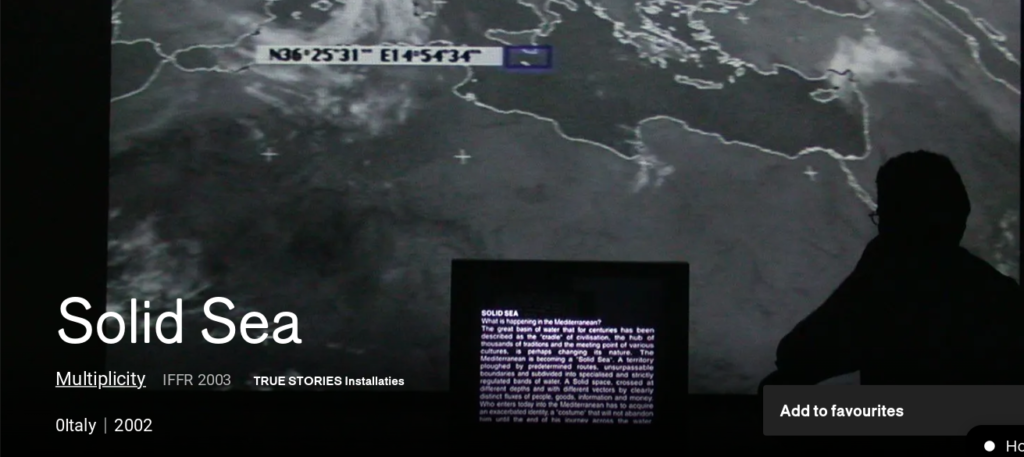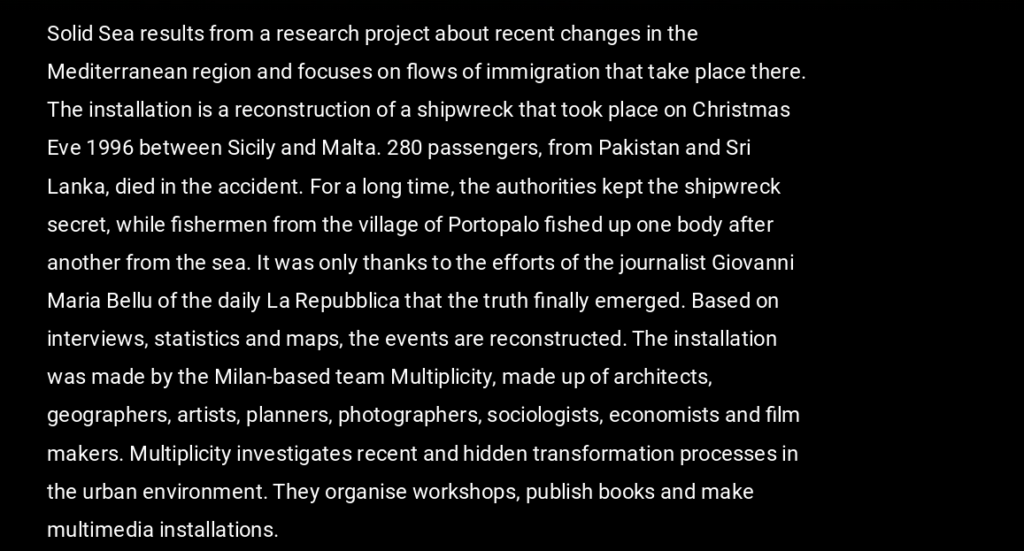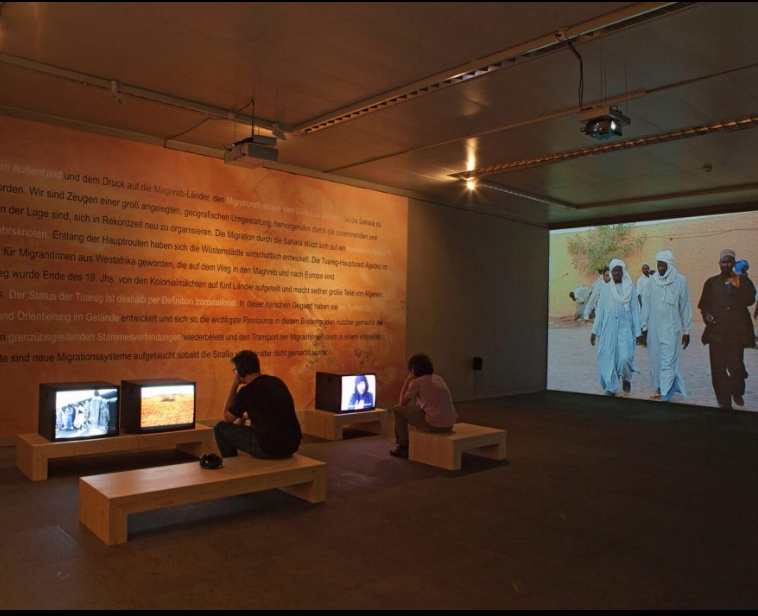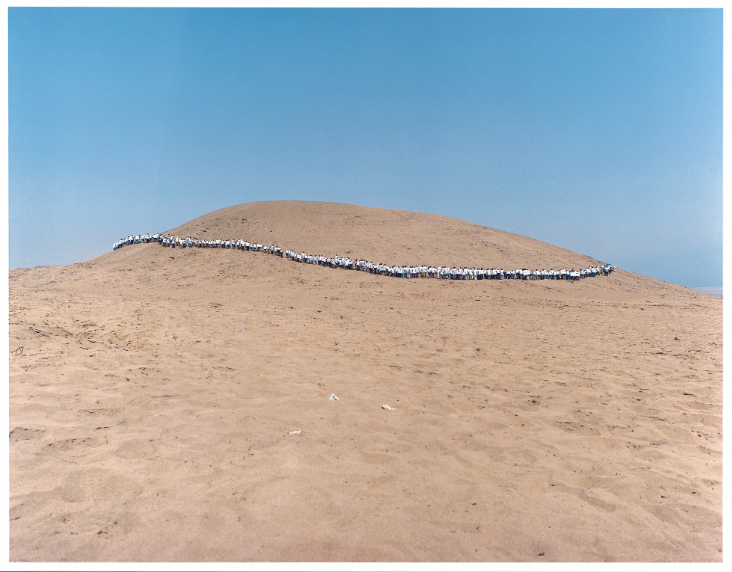Revisiting the Ethnographic Turn
- This text explores how artists engage with an ethnographic perspective in their work and how similarities between art-making and anthropology present themselves as, arts projects are presented as (a kind of) ethnographic research and ethnographic research is presented as (a kind of) art ( pg.461).
- Lucy Lippard: Is the artist wanted there and by whom? Every artist should be required to answer this question in depth before launching what threatens to be intrusive or invasive projects (pg. 463). Ensure ideas/concepts or shared or there is a clear-cut process to what the outcome of a project is that everyone involved understands and accepts.
- In ‘Organising complexities: the potential of multi-screen video installations for ethnographic practice and representation’,Steffen Köhn explores a possible configuration of video art and anthropology by analysing three recent multi-screen video installations: (pg. 468)
Solid Sea. Multiplicity– multidisciplinary group of artists and scientists 

Sahara Chronicle- 2006-09- Ursula Biemann- 12 videos

Sahara Chronicle, video installation at Kunstmuseum Bern, 2012
Transit migration through the Sahara is a large-scale collective experience that is best understood in its systemic dimension. Highly adjustable, these movements have generated prolific operational networks, systems of information and social organisation among fellow migrants as well as interaction with local populations.
A Tale of Two Islands- Steffen Köhn- 2012

https://vimeo.com/81262137
The installation immerses the spectator in these two realities by placing him on the very border that shapes the life on each island. The work is structured as a loop. Each film narrates a single day, from sunrise to sunset. The cycle of everyday events thus unfolds simultaneously on both sides of the border. The audience is free to move in the installation space, yet attention is subtly guided through the sound that accentuates particular scenes and incidents.
- Value of the multi-perspectivity? They each evoke a sensual proximity to the experience of migrant subjects, thereby revealing the complexity of transnational connection. How these installations involve the spectator in ways that are inaccessible to written ethnography, which is indeed one of the ‘problems of representation’ that anthropology is grappling with. By demanding that viewers position themselves not only physically in relation to the screens, but also intellectually and empathically in terms of the social issues at stake, the author highlights that the significance of the works lies not only in their discursive content, but also in the mode of activated spectatorship which they require. (pg. 468).
- Film enables artists, participants, directors to be more present in the process so we as an audience are too? By engaging with artworks more closely, and from a range of perspectives, we can empathically learn about others as if we are also present and experiencing another culture.
Anthropology + Art Practice

When Faith Moves Mountains, Francis Alys, 2002. https://www.moma.org/collection/works/109922
Within Anthropology and Art Practice, Anrd Schneider and Christopher Wright question the authenticity and integrity of Francis Alys’ work When Faith Moves Mountains. This work involved 500 volunteers attempting to move a sand dune located near a shantytown called Ventanilla on the outskirts of Lima to engage with the notion of futile labour and exploitation of the poor and landless in Latin America. As is pointed out in the text, there is a tension between subject and execution within the artwork as volunteers were employed to participate, avoiding any notion to engage directly with any of the shantytown inhabitants..even though he was ostensibly making a comment about their labour and exploitation. This introduces the concern of working with groups of people when the artist is in the authority of creative decisions, ideas and processes. The danger here is volunteers acting as workers who are there to take direction from the artist therefore, reducing these working people to an abstract idea that is impersonal. (Schneider, A., & Wright, C. 2013)
References:
(2013) Revisiting the ethnographic turn in contemporary art, Critical Arts, 27:5, 459-473, DOI: 10.1080/02560046.2013.855513
Schneider, A., & Wright, C. (2013). Ways of Working. In A. Schneider & C. Wright (Eds.). Anthropology and Art Practice (pp. 1–24). London: Bloomsbury Academic. Retrieved January 26, 2023, from http://dx.doi.org.ezproxy.is.ed.ac.uk/10.5040/9781474214018.ch-001


Leave a Reply